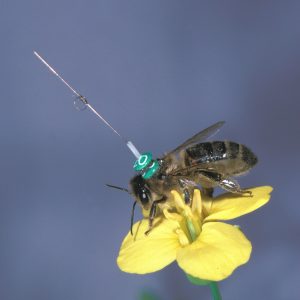Earlier today myself and 5 coworkers, went back to the wild onion site, I mentioned in my last post. We spent another half day clearing out sage brush and cheatgrass under an overcast sky. The site is transfixing, and beautiful. It is on the side of a steep hill, full of sage brush and bitterbrush, as well as lots of other forbs. In the distance there is a tiny spring, and the chattering of quail is a common sound. Amidst this site, there is a spot that is devoid of sage brush, extending up the hill. Its about the size of a two full length basketball court. There is no organic matter or soil, the substrate is small pebbles and gravel, that constantly shift. It holds little to no water. It is a harsh environment, where very few plants grow well. The onion, Allium aaseae, thrives in these conditions.
Allium aaseae is a rare endemic plant, found in only a few locations in Idaho. It is just starting to sprout. At the moment it looks like little blades of grass, but in a few months the entirety of the site will be covered in pink flowers. Perhaps because I know its a rare plant and I’m working to maintain a site for it, I am biased towards liking this site. However, the harshness of the site, and just how small of a range this plant has (it can grow in only a small fraction of this hill), fascinate me.
In another sense, it is also the feeling of accomplishment of cleaning up the site. There are a few aspects of cleaning up that we are working on. Basically we are trying to create a buffer around the site to prevent encroachment of unwelcome species. We are removing cheatgrass, and trimming the sagebrush and bitterbrush, so that they catch less seeds and provide less protection to those unwelcome seeds that germinate. Its great to see the difference on our monthly visits, and it could serve as a model for restoration. However, it will take more work and manpower to fully recover the site, more than our crew can handle at the moment.
On my Florida lichen database project, I am making good progress. I finished checking the data. All I have left to do is check the identification of a handful of specimens, fill in the substrate in the database of a couple hundred lichens, and then they can be shipped out to various herbaria around the world. By this time next month, I assume I will be working on another databasing project but working more in the field. Spring is coming. However, below is proof it snowed in Boise- my first and probably last snow angel of the season.
Barry Kaminsky
BLM State Office, Boise, ID




















